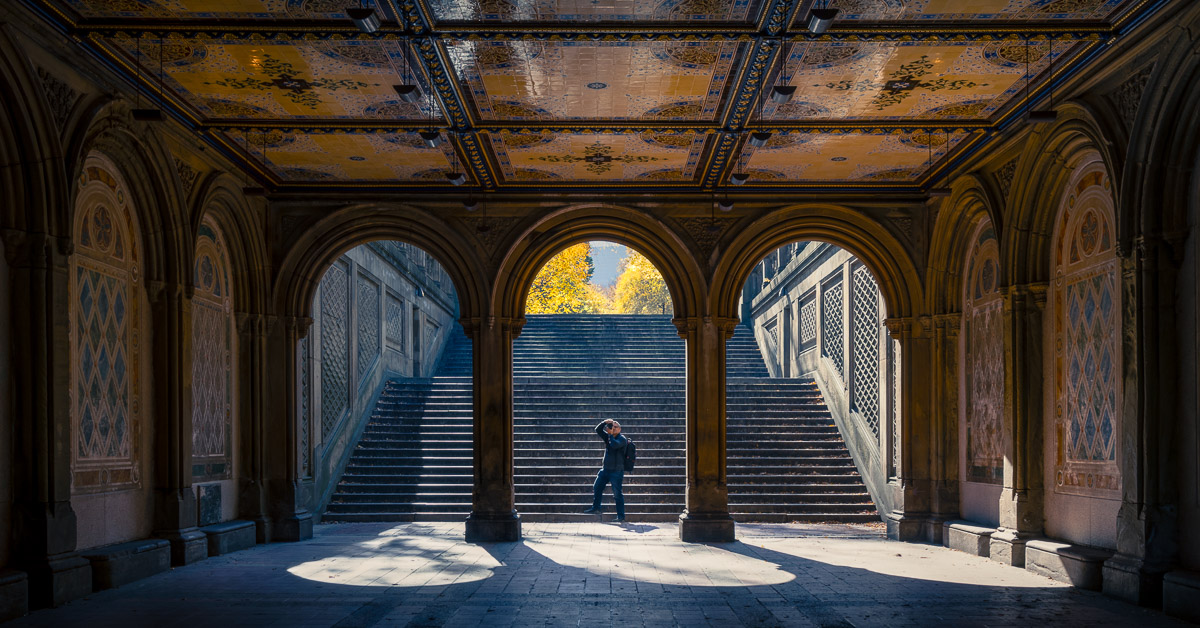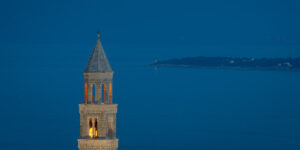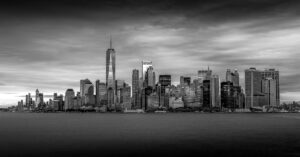One of the things that satisfied my passion for aviation in my early years was to read aviation magazines and especially other pilots’ experiences. One of the best places to find such stories is the famous column in the Flying magazine called “I Learned About Flying From That.” In it, pilots write about mistakes, emergencies, and near misses that were potentially deadly but invaluable lessons in flying. One of the things I like in aviation, and this column specifically, is that even the best pilots openly admit their mistakes to help others avoid the same situation.
I still follow that column regularly, which gave me the idea to do something similar on this blog. So, wiWith the “My Photo Stories” series, I will cover real-life experiences that helped me realize or accept certain truths about photography.
Admittedly, photography is not like flying. Rarely will a photographer’s mistake lead to a life-threatening situation or have the potential to be a scenario for an exciting movie. Nevertheless, knowing what goes into making or breaking a successful photo could be extremely helpful to a developing photographer.
While this series will be about photography, and some jargon will be inevitable, the goal is to make it interesting and relevant for everybody, just like how I was able to enjoy reading a legendary aviation magazine’s column without being a pilot myself.
This is the first such story. Following the previous blog article, we remain in New York and talk about the awarded photo.
While preparing for the trip to New York, I looked at existing photographs of the places I intended to visit. I always liked the photos of Bethesda Terraces for its absorbing interplay between light and dark between its arches.
Like with many famous places, I faced two problems. First, creating something that stands out from numerous existing photographs would be challenging. Second, the place would likely be full of people.
I intended to approach both problems by coming in before the crowds. Luckily for us photographers, tourists usually don’t like to go out very early. Early morning would also give me the best possible light to work with: the interplay of yellow light inside and deep blue outside. With this kind of light, I could make the best photo possible. Or so I thought.
Following my general approach, I planned a scouting visit to the location a day before. Central Park is huge, and it took me all morning to get from the north of the park to the Bethesda Terraces. When I arrived, the sun was already high, and the light was harsh and demanding. As expected, there were groups of people everywhere. At first glance, it seemed impossible and a bit disappointing. But as my eyes adapted to the dark inside, I noticed the arches’ shades and how the intense sun made the leaves outside glow. I waited for a while, hoping to get a moment of relative calm, but there were just too many people. The only way to make it work would be to use one of the more advanced techniques.
I decided to do something I jokingly call premeditated photoshopping. The idea is to ensure you capture everything you would need to manually remove the people in Photoshop. So, I mentally divided the space in front of me into 9 zones and waited for a zone to be empty to take a shot. It required quite a bit of patience and a lot of concentration, but it worked.
I was satisfied with the results and saw myself finishing a very good photo. But, just as I was getting ready to start packing my equipment, I noticed a lone photographer entering the stairs. I immediately got an idea. My gear was still prepared, and I waited for him to stop at the right place to take a shot. You can never know whether it would all line up perfectly in such a rapidly changing scene, but this time it did. The result was precisely what I was after; a unique and very personal photo of the famous place.
So, what did I learn from the whole event?
This happened at the end of my 7-hour-long morning walk in Central Park. I took a few other excellent photos that week, but this one was my favorite. It proved two things.
First, you need to give time to every location and keep searching. You can find exciting scenes everywhere in a place as unique as Central Park, but the most obvious ones might not be the best possible. The best photos often aren’t exactly where you expect them. You need to be patient and always open to new ideas.
Second, there is no good or bad light for photography. I captured this photo around noon. Typically, it is the worst time of the day as the colors are far from beautiful, and the contrasts are far too strong. However, in this case, the sun right above made the underground area receive more natural light, created intriguing shades, and made the treetops outside glow in a beautiful yellow color. Ultimately, I like this noon photo more than the early morning one I planned to do and did the day after.
Often, when I plan to go to take photos, things don’t look promising. I don’t have a clear idea about a place or cannot visit it at the perfect time. Admittedly, I sometimes give up in these circumstances. But I shouldn’t. I should always go out and try. It might not work every time, but the results can be spectacular when it does.
One of the things that satisfied my passion for aviation in my early years was reading aviation magazines and especially other pilots’ experiences. The best place to find such stories is the famous column in the Flying magazine called “I Learned About Flying From That.” In it, pilots write about events, emergencies, and near misses that were potentially deadly but invaluable lessons in flying. A thing I like in aviation, and specifically in this column, is that even the best pilots openly admit their mistakes to help others avoid the same situation.
I still follow that column regularly, which gave me the idea to do something similar on this blog. So, with the “My Photo Stories” series, I will cover real-life experiences that helped me realize or accept certain truths about photography.
Admittedly, photography is not like flying. Rarely will a photographer’s mistake lead to a life-threatening situation or have the potential to be a scenario for an exciting movie. Nevertheless, knowing what goes into making or breaking a successful photo could be extremely helpful to a developing photographer.
While this series will be about photography, and some jargon will be inevitable, I aim to make it interesting for everybody, just like how I was able to enjoy reading a legendary aviation magazine’s stories without being a pilot myself.
This is the first such story, and following the previous blog article, we remain in New York and talk about the awarded photo.
While preparing for the trip, I looked at existing photographs of the places I intended to visit. Among many others, I always liked the photos of Bethesda Terraces for its absorbing interplay between light and dark between the arches.
Like with many famous places, I faced two problems. First, creating something that stands out from numerous existing photographs would be challenging. Second, the place would likely be full of people.
I intended to approach both problems by coming in before the crowds. Luckily for us photographers, tourists usually don’t like to go out very early. Early morning would also give me an attractive combination of yellow light inside and deep blue colors outside. With this kind of light, I could make the best photo possible. Or so I thought.
Following my general approach, I planned a scouting visit to the location a day before. Central Park is huge, and it took me all morning to get from the north of the park to the Bethesda Terraces. When I arrived, the sun was already high, and the light was harsh and demanding. As expected, there were groups of people everywhere. At first glance, it seemed impossible and even a bit disappointing. But as my eyes adapted to the dark inside, I started to notice the arches’ shades and how the intense sun made the leaves outside glow.
I waited for a while, hoping to get a moment of relative calm, but there were just too many people. The only way to make it work would be to use a more advanced technique.
I decided to do something I jokingly call premeditated photoshopping. The idea is to capture multiple photos to enable you to manually remove people later in Photoshop. So, I mentally divided the space in front of me into 9 zones and waited for a zone to be empty to take a shot. It required quite a bit of patience and a lot of concentration, but it worked.
I was satisfied with the results and had already seen myself finishing an excellent photo. But, just as I was getting ready to start packing my equipment, I noticed a lone photographer entering the stairs. I instantly got an idea to include him, and my gear was still prepared. All I had to do was wait for him to be at the right place. You can never know if it would all line up perfectly in such a rapidly changing scene, but this time it did. The result was precisely what I was after; a unique and very personal photo of the famous place.
So, what did I learn from the whole event?
After walking for seven hours in Central Park, I was exhausted and ready to finish my morning session. Initially, I didn’t feel like spending an additional hour in the park, but I’m glad I persisted, as once I started to follow through with my idea, I got a big boost of creative energy.
The best photos are often not in the places and times you expect them to be. You must be patient, open to new and changing scenes in front of you, and always follow through with your idea.
Second, there is no good or bad light for photography. I captured this photo around noon. Typically, it is the worst time of the day as the colors are far from beautiful, and the contrasts are far too strong. However, in this case, the sun right above made the underground area receive more natural light, created intriguing shades, and made the treetops outside glow in a beautiful yellow color. Ultimately, I like this noon photo more than the early morning one I planned to do and did the day after. Furthermore, it is my favourite photo of the whole week.
Often, when I plan to go to take photos, things don’t look promising. I don’t have a clear idea about a place or cannot visit it at the perfect time. Admittedly, I sometimes give up in these circumstances. But I shouldn’t. And neither should you. If you feel an impulse to do something challenging, you shouldn’t overthink or let doubts hold you back. Just go out and give it a try. It might not work every time, but the results can be spectacular when it does.





